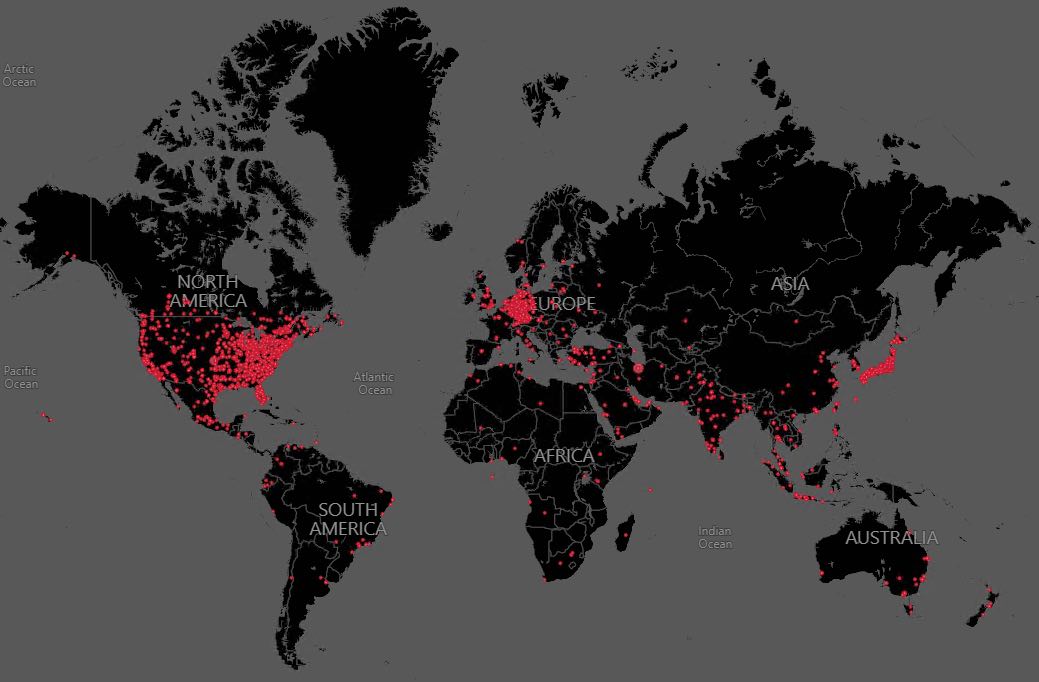
Above: A map of infections supplied by Microsoft.
Microsoft announced today that the company’s Digital Crimes Unit (DCU) has taken action to disrupt a criminal botnet called ZLoader.
ZLoader is made up of computing devices in businesses, hospitals, schools, and homes around the world and is run by a global internet-based organized crime gang operating malware as a service that is designed to steal and extort money.
Thanks to a court order, the company got that the domains are now directed to a Microsoft sinkhole where they can no longer be used by the botnet’s criminal operators. Zloader contains a domain generation algorithm (DGA) embedded within the malware that creates additional domains as a fallback or backup communication channel for the botnet.
In addition to the hardcoded domains, the court order allows to take control of an additional 319 currently registered DGA domains. Additionally, work is already underway to block the future registration of DGA domains.
During the investigation, it was identified one of the perpetrators behind the creation of a component used in the ZLoader botnet to distribute ransomware as Denis Malikov, from the city of Simferopol on the Crimean Peninsula. The decision to name an individual in connection with this case makes clear that cybercriminals will not be allowed to hide behind the anonymity of the internet to commit their crimes. Today’s legal action is the result of months of investigation that pre-date the current conflict in the region.
Originally, the primary goal of Zloader was financial theft, stealing account login IDs, passwords and other information to take money from people’s accounts. Zloader also included a component that disabled popular security and antivirus software, thereby preventing victims from detecting the ZLoader infection.
Over time those behind Zloader began offering malware as a service, a delivery platform to distribute ransomware including Ryuk. Ryuk is well known for targeting health care institutions to extort payment without regard to the patients that they put at risk.
DCU led the investigative effort behind this action in partnership with ESET, Black Lotus Labs (the threat intelligence arm of Lumen), and Palo Alto Networks Unit 42, with additional data and insights to strengthen our legal case from our partners the Financial Services Information Sharing and Analysis Centers (FS-ISAC) and the Health Information Sharing and Analysis Center (H-ISAC).
In addition to our Microsoft Threat Intelligence Center and Microsoft Defender team. We also recognize the additional contribution from Avast in supporting our DCU field in Europe.
The disruption is intended to disable ZLoader’s infrastructure and make it more difficult for this organized criminal gang to continue their activities. We expect the defendants to make efforts to revive Zloader’s operations. We referred this case to law enforcement, are tracking this activity closely and will continue to work with our partners to monitor the behavior of these cybercriminals.
We will work with internet service providers (ISPs) to identify and remediate victims. As always, we’re ready to take additional legal and technical action to address Zloader and other botnets.

